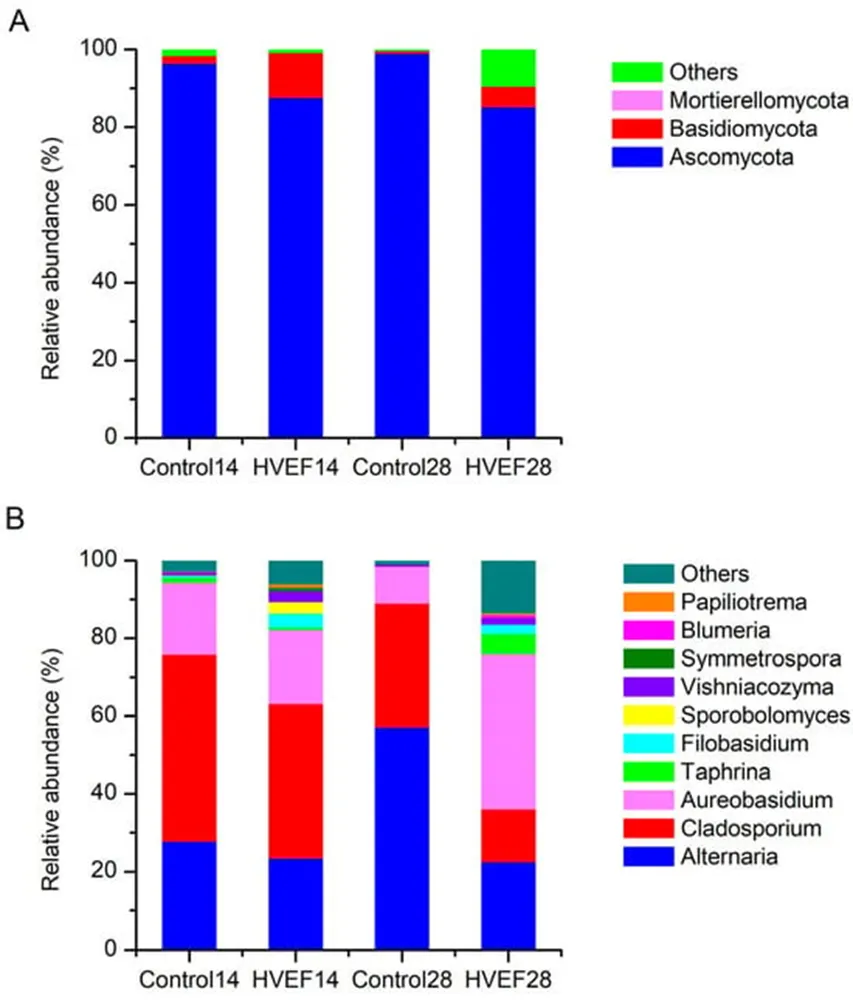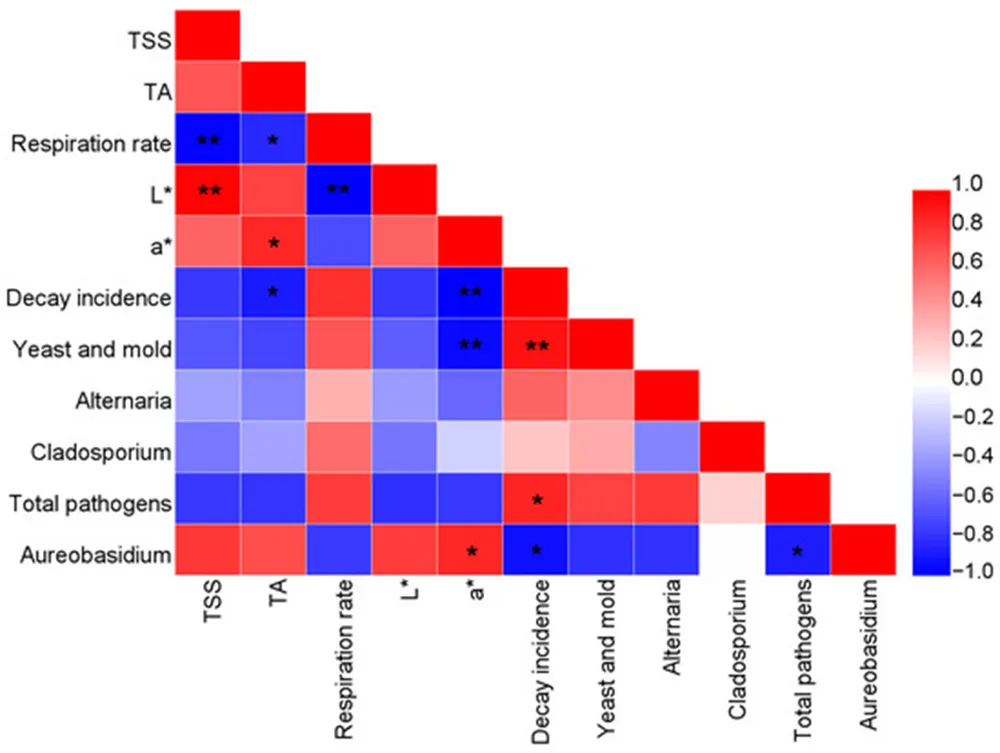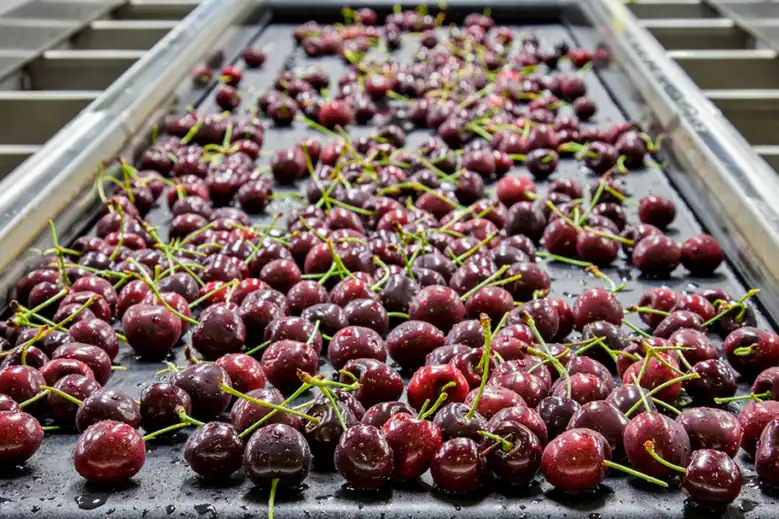The high rate of post-harvest respiration leads to rapid deterioration of sweet cherries, causing changes in texture and flavor, ultimately affecting their sensory qualities and nutritional value.
Microorganisms, including both beneficial and harmful ones, play a crucial role in fruit health. Plants naturally host a diverse and dynamic microbial community that contributes to the overall ecosystem balance.
However, the rapid proliferation of harmful fungi can disrupt this balance, leading to fruit decay. Therefore, understanding the microbial composition of stored fruit is essential to uncover how fungal communities interact and influence fruit quality during storage.
Preservation methods and challenges
Although chemical treatments are commonly used to control fruit metabolism and inhibit microbial growth, concerns about chemical residues, complex processes, and environmental pollution have raised consumer apprehension.
 Image 1. Fungal community composition on sweet cherry. (A) Fungal abundance at phylum level; (B) fungal abundance at genus level. Note: 14 and 28 represent the days of storage.
Image 1. Fungal community composition on sweet cherry. (A) Fungal abundance at phylum level; (B) fungal abundance at genus level. Note: 14 and 28 represent the days of storage.
As a result, there is increasing interest in preservation methods using physical means, which are safer and more environmentally friendly. One of the simplest and most widely used ways to preserve fruit quality is low-temperature storage.
However, the particularly thin skin of sweet cherries makes them highly susceptible to fungal infections, and studies have shown that low temperature alone is insufficient to fully suppress fungal growth.
High-voltage electrostatic field treatment
Consequently, researchers have explored alternative preservation technologies, such as high-voltage electrostatic field (HVEF) treatment, which has recently gained attention for its potential to extend fruit shelf life.
HVEF is an innovative, low-energy, chemical-free technique that has been shown to improve the storage and longevity of fruits and vegetables.
The treatment can be applied directly within refrigerators, making it a simple, cost-effective, and time-saving method.
The study and results
In this study, conducted in collaboration between universities and research centers in China, Pakistan, and Singapore, the aim was to explore the effects of electrostatic field treatment on the physicochemical properties and fungal composition of sweet cherries during cold storage.
The experiment was conducted at 4°C for 28 days, with measurements taken every seven days. The results showed that this treatment not only increased fungal diversity but also altered the abundance of specific fungal species.
Compared to the control group, the abundance of harmful fungi such as Alternaria and Cladosporium was reduced, while Aureobasidium, a non-pathogenic fungus, became predominant.
 Image 2. Correlation analysis of the quality parameters of sweet cherry; * and ** represent difference at p < 0.05 and p < 0.01, respectively.
Image 2. Correlation analysis of the quality parameters of sweet cherry; * and ** represent difference at p < 0.05 and p < 0.01, respectively.
Implications and future prospects
This shift in fungal composition suggests that the treatment could help reduce the growth of specific pathogenic fungi while promoting the presence of beneficial microorganisms that may contribute to fruit preservation.
Furthermore, the high-voltage electrostatic field treatment proved to be effective in improving the physicochemical properties of sweet cherries, reducing respiration, and enhancing fruit quality.
With the growing demand for safe and environmentally friendly preservation methods, this treatment could become a key technology to extend the shelf life of sweet cherries and other perishable fruits.
Offering a chemical-free solution, this technology could improve both fruit quality and marketability.
Image source: Yanlong Liu et al., 2024; SL Fruit Service
Source: Liu, Y.; Zhang, L.; Hu, T.; Liu, Q.; Zhou, S.; Zhao, Y.; Jatt, A.-N.; Zhang, C.; Gong, H. A New Strategy for Enhancing Postharvest Quality of Sweet Cherry: High-Voltage Electrostatic Field Improves the Physicochemical Properties and Fungal Community. Foods 2024, 13, 3670. https://doi.org/10.3390/foods13223670
Melissa Venturi
University of Bologna (IT)
Cherry Times - All rights reserved














